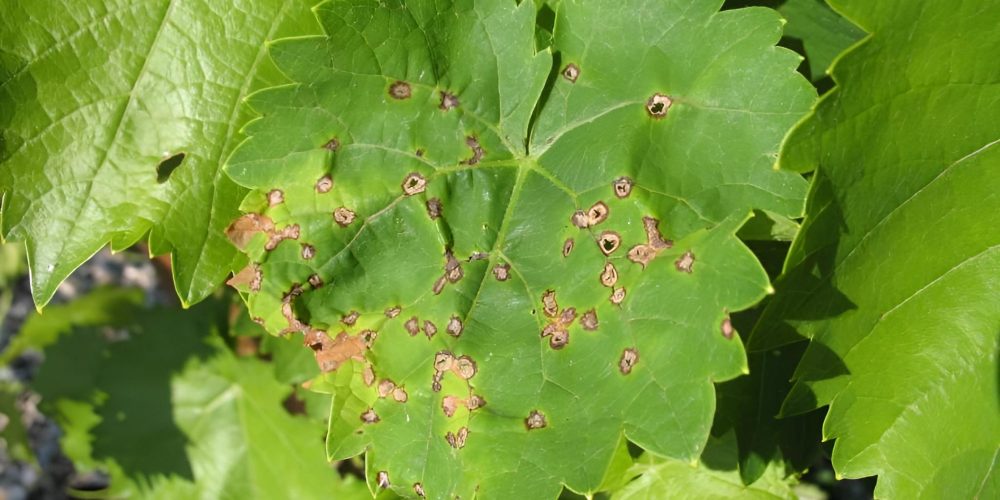Table of contents of the article
ToggleGrape anthracnose is a fungal disease that affects bunches and leaves, causing black spots and a negative impact on crop quality. In this article on your website, World of Plants, we review how to deal with this disease.
Symptoms of grape anthracnose
- Scientific name :Anthracnose of Grape
- Type of disease : Innate
- The causative fungus : Elsinoe ampelina shear
- Symptoms appear on the leaves in the form of small spots (1-5 mm), circular in shape, with a white-gray center and a dark (violet black) color around them. These spots are separate and scattered on the surface of the leaf. As the injury progresses, they expand and connect to each other.
- As the infection progresses, they expand and connect to each other, and the infected tissues in the center of the spots can dry out and fall off, leaving holes on the leaf in their place.
- Technical leaves are usually more sensitive to infection than older leaves
- On young and tender parcels, a number of small spots appear first, circular in shape and reddish-brown in color. As the infection progresses, the spots expand and become elongated, extending longitudinally towards the growth of the branches, and sunken in the form of ulcers as a result of tissue erosion at the site of the infection.
- The destruction does not stop at the bark tissue, but rather reaches the wood and the central marrow of the branches, and ulcers appear in the affected areas as a result of the shattering of cells under the influence of droplet enzymes capable of decomposing the pectin compounds involved in the composition of the middle lamellae of the barbell cells and the cortical collanchyma tissue.
- The ulceration is unlimited in depth, while the ulcerated spot on the surface of the affected branch is defined by corky tissue. This tissue forms quickly in response to the injury in the form of a ring slightly raised above the surface, and in a dark reddish-brown to black-purple color, while the ulcerated area takes on a gray color and becomes The affected branch is fragile and breaks quickly in the affected area.
- Small, circular, reddish spots also appear on the fruits. It expands to 6, and may become slightly sunken in the fleshy body of the fruit, its center takes on a gray color, and it is surrounded by a narrow brown-reddish to black-purple border.
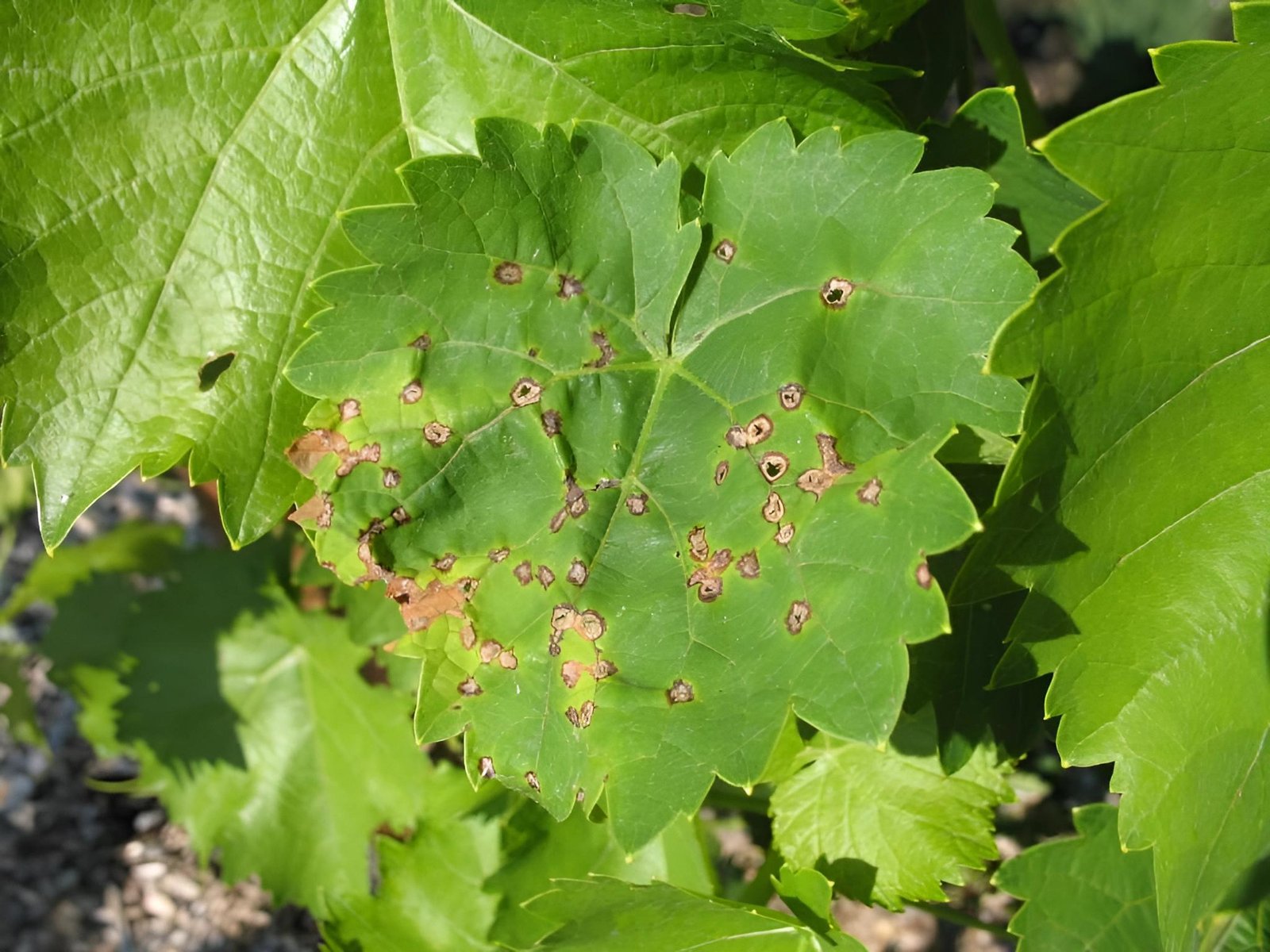
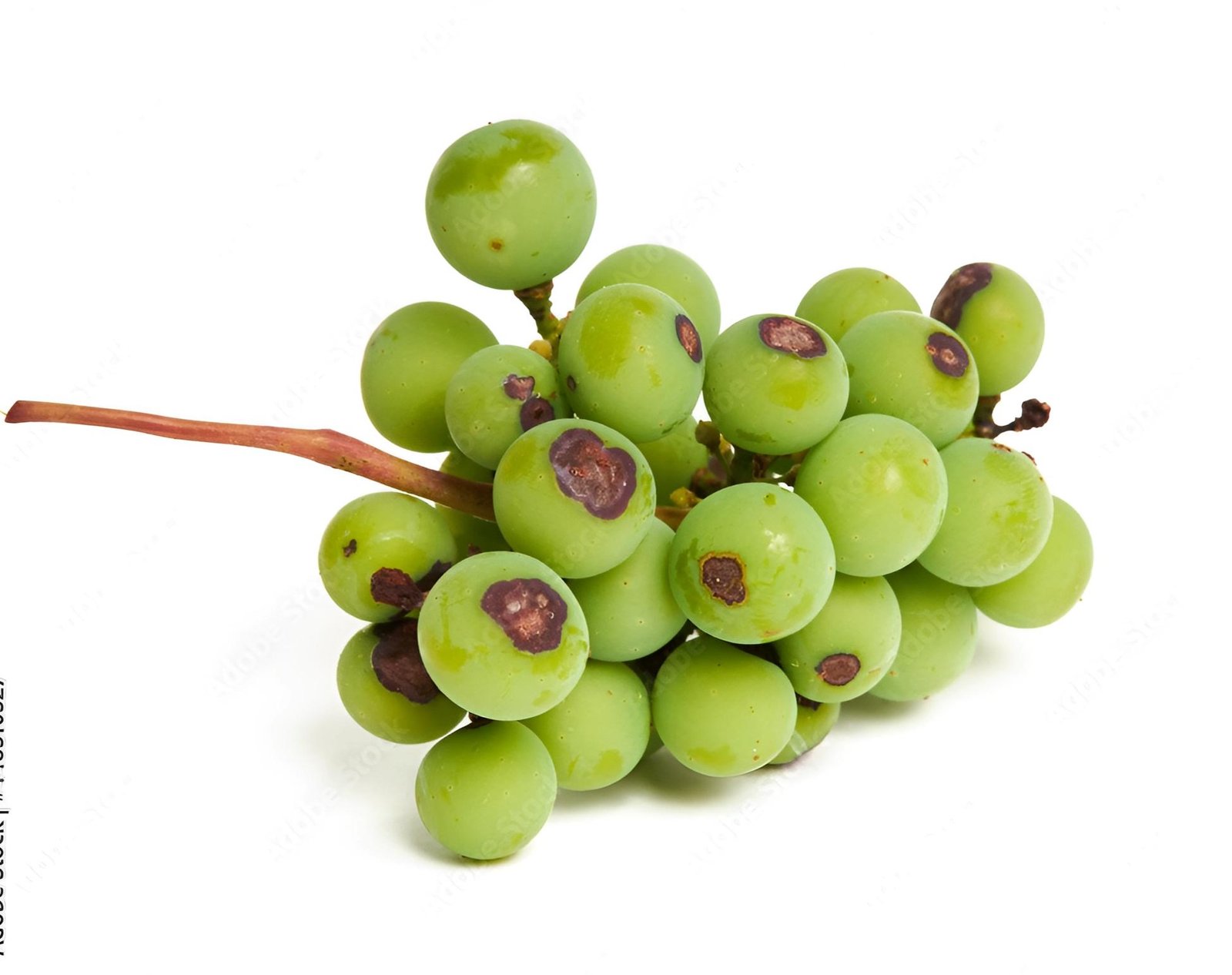
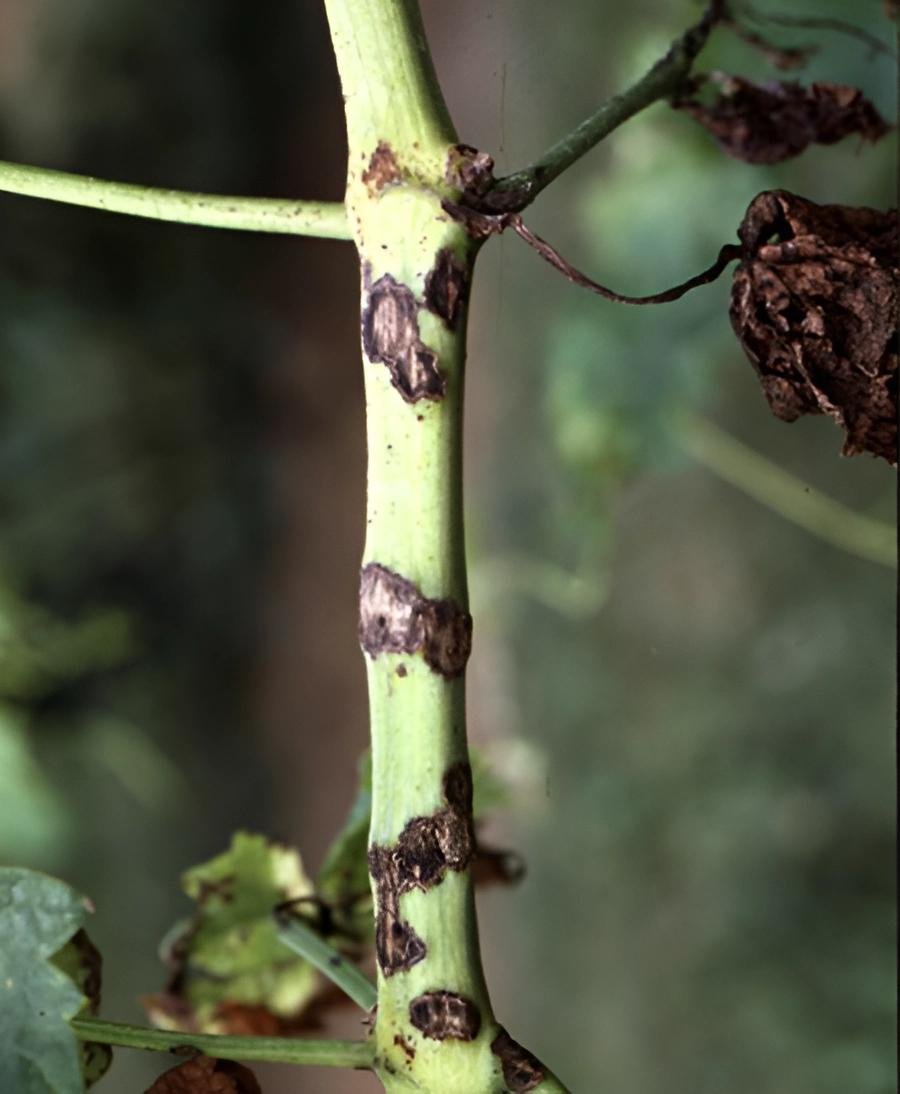
Causes of grape anthracnose
-Humid weather.
- Conidial spores are spread by rain or wind spray (if there is rain of 2 mm or more, the conidial spores spread to reach green tissues)
The optimal temperature for disease development is 24-26 degrees Celsius
– Cultivation of highly susceptible varieties such as Avuz Ali, Thomson Seedless, Regina Nera, Cardinal, Delicia, Citronella, Black Corinth, Italia and others.
Hail in the summer may increase the spread of the disease.
- Acidic or saline soil.
- Incorrect pruning
Conditions suitable for the spread of the disease
High humidity, heavy rain, and warm weather encourage the development and spread of the disease.
Grape anthracnose development cycle
- The fungus spends the winter in the form of sclerotia, concentrated in the vicinity of the ulceration areas on parcels. When spring arrives, and there is a long period of moisture or dew, the sclerotia germinate, producing a large number of conidial spores that spread to the newly formed young tissues.
- When appropriate conditions are available, conidial spores germinate to infect young plant parts, such as leaves, shoots, and fruits.
- After the infection occurs, conidial spores of the fungus are formed again in Acervuli fruits on unbranched conidial stands, and these spores are responsible for spreading the disease during the growing season.
Losses of grape anthracnose spread
It affects ripe fruits and always reduces the value of the crop. The disease can also infect all green tissues, including leaves, young stems, flowers, and young fruits
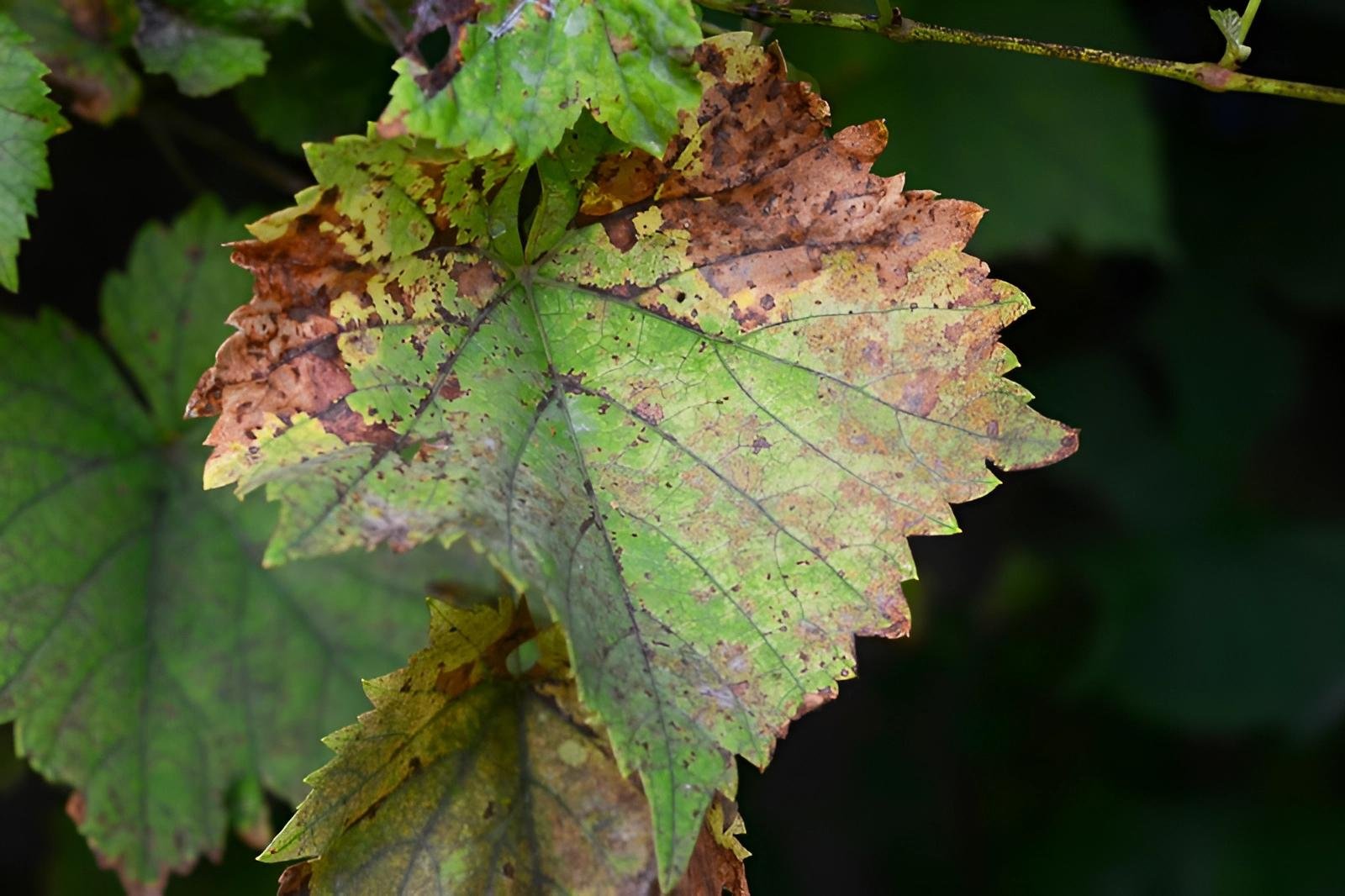
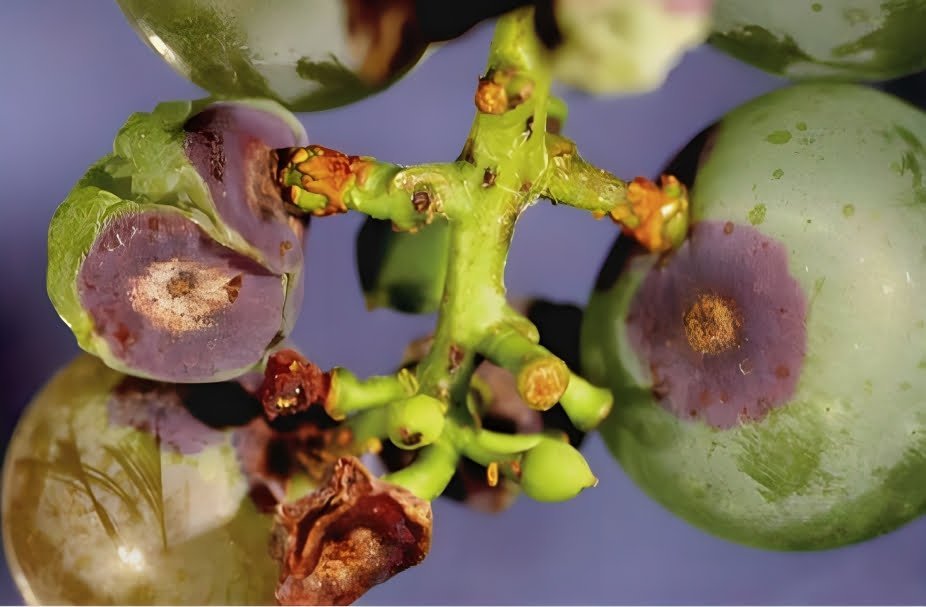
Grape anthracnose control strategy
Preventive measures to prevent the occurrence of grape anthracnose
- Get rid of the affected parts and burn them when performing the pruning process.
- Attention to drainage.
- Prohibiting the transfer of infected nursery products from one region to another.
- Avoid dense planting.
- Choose planting locations that allow plants to be exposed to sunlight and air currents.
- Good tillage of the soil and disposal of plant remains, especially fruits
Chemical and organic control recommendations against grape anthracnose
- Organic control: Avoid planting sensitive varieties such as Vitis vinifera and some French hybrids. In general, French varieties and hybrids are more sensitive to infection than American varieties.
- Disinfecting planting tools in special solutions after treating plants. This will also prevent the spread and occurrence of disease
- Chemical control: Spraying at the beginning of spring, just before the eyes swell, with copper compounds, or with boiled lime and sulfur, then continue spraying during the growing season with appropriate fungicides. It is recommended to mix zeinab or captan with Bordeaux mixture, as the first spraying begins when the third leaf appears on recent parcels. The treatment is repeated several times depending on the humidity of the air and the severity of the infection.
In conclusion, we would like to note that we, at the world of plants website, offer you all the necessary services in the world of plants, we provide all farmers and those interested in plants with three main services::-
- Artificial intelligence consulting service to help you identify diseases that affect plants and how to deal with them.
- Blog about plants, plant diseases and care of various crops ... You are currently browsing one of her articles right now.
- An application that provides agricultural consultations to clients, as well as a service for imaging diseases and knowing their treatment for free – Click to download the Android version from Google Play Store، Click to download the IOS version from the Apple App Store.
References:
- Ellis, M. A., & Erincik, O. (2008). Anthracnose of grape. Agriculture and Natural Resources, 1-3
- Soytong, K., Srinon, W., Rattanacherdchai, K., Kanokmedhakul, S., & Kanokmedhakul, K. (2005). Application of antagonistic fungi to control anthracnose disease of grape. J. Agric. Technol, 1, 33-41
- Magarey, R.D., Coffey, B.E., & Emmett, R.W. (1993). Anthracnose of grapevines, a review. Plant Prot. Q, 8, 106-110
- Poolsawat, O., Tharapreuksapong, A., Wongkaew, S., Chaowiset, W., & Tantasawat, P. (2012). Laboratory and field evaluations of resistance to Sphaceloma ampelinum causing anthracnose in grapevine. Australasian Plant Pathology, 41, 263-269
- Anthracnose of Grape – file
- Anthracnose of grapevines, a review – pdf file
- Laboratory and field evaluations of resistance to Sphaceloma ampelinum causing anthracnose in grapevine – springer




